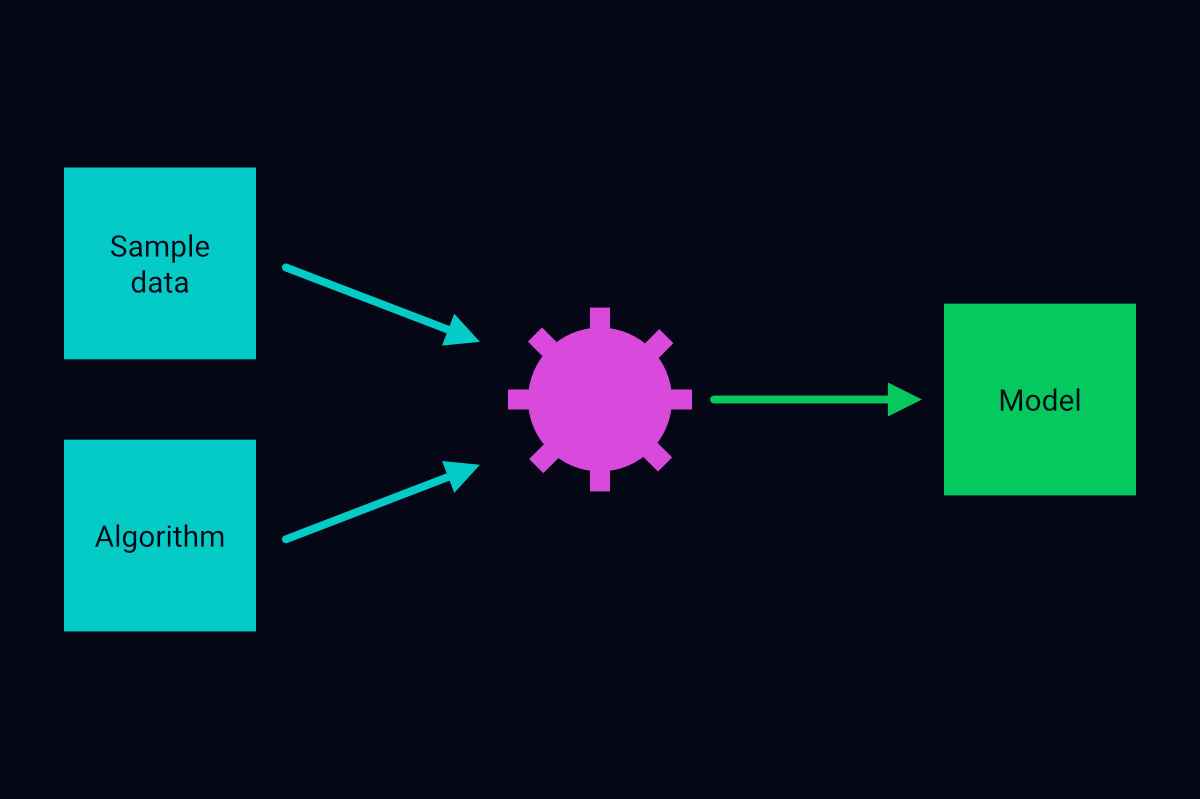What is machine learning?
Created by Shambhavi Thakur
Navigation Keys
Press the F key to activate full-screen mode.
Use the ESC key to exit full-screen mode.
Use the O key to toggle overview mode.
Definition
Machine learning is the science of building applications that can generate outputs automatically. If you use machine-learning, you don't have to write step-by-step code to generate output values from input data.
Traditional computing vs. machine learning
Traditional computing is based on logical algorithms.
Machine learning is based on specialized, rule-based algorithms.
Note: Press the ⬇ arrow or swipe for further information.
A traditional algorithm
- Performs logical, step-by-step calculations on input data
- Returns the result or output of the calculations
A machine-learning algorithm
- Acts as a blueprint for a machine-learning model
- Works in conjunction with sample data, which consists of either of the following elements:
- Input data alone
- Input data elements and their corresponding outputs
A machine-learning model
Performs the following tasks:
- Learns the rules that interrelate the elements of its sample data
- Uses the learned rules to make predictions on new input data
Simple examples
- Traditional computing
- Calculating the square root of a number using step-by-step instructions
- Machine learning
- Predicting the square root of a number as per rules learned from sample data
Problems solved through machine learning
- How much will these stocks cost next Monday?
- How many units of these products can we sell?
- Which of the prospective customers might buy this subscription?
- How do we quickly record handwritten addresses in our computerized database?
Machine-learning principles
- Don't hard code decision-making logic.
- Do incorporate machine-learning models.
The machine-learning recipe
How do we build a model?
Note: Press the ⬇ arrow or swipe for further information.
The model-building process

Model-building steps
- Determine the type of machine-learning problem: supervised, unsupervised, or reinforcement.
- Obtain sample data.
- Select a machine-learning algorithm.
- Instantiate a machine-learning model based on the algorithm.
- Train the model so that it learns the rules according to which the variables in the sample data are interrelated.
Model deployment
- Deploy a trained model in an application, such as a web or mobile app or a speech-recognition device, or as an application programming interface (API).
- Use the model to generate insights and predictions on new data.
- Continue to train and improve the model using fresh batches of sample data.
Note: Make sure the new data has a similar structure as the sample data.
That's the gist of it.
For additional information, visit
shambhavithakur.com.